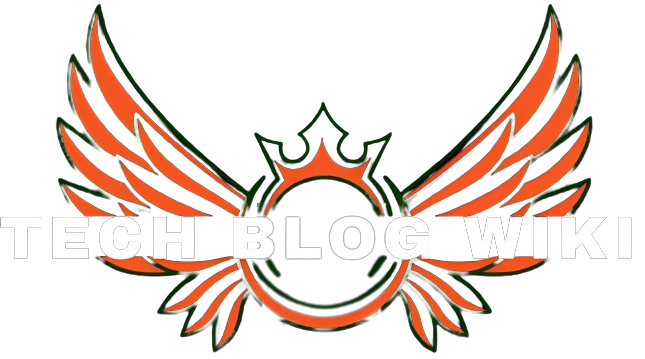Content creation is essential to digital marketing, branding, and knowledge sharing.
From blog posts to social media updates, businesses and individuals rely on high-quality content to entertain their audiences and establish themselves as authorities in their respective domains.
However, generating compelling and informative content consistently can take time and effort. This is where ChatGPT, an advanced conversational AI model, comes to the rescue. How to write a blog using ChatGPT?
This Techblogwiki article will guide you on utilizing how to write a blog using ChatGPT and enhance your content creation process.
What is ChatGPT?

ChatGPT is an AI language model designed by OpenAI. It is established on the GPT-3.5 architecture, which allows it to understand natural language and produce human-like responses.
ChatGPT has been trained on extensive amounts of data from the internet, making it highly knowledgeable across a wide range of topics.
If you want to enhance your ChatGPT result then you can use the best ChatGPT use cases for the improvement of the interact with AI-powered systems.
How Can ChatGPT Play a Role in the Content Creation Process?

AI, specifically ChatGPT, can play a transformative role in content creation.
Its natural language processing and understanding capabilities enable it to assist and enhance various aspects of content creation, making the process more efficient, creative, and productive.
Here are some ways AI and ChatGPT can contribute to how to write a blog using ChatGPT:
Idea Generation:
Making fresh, engaging content ideas can be challenging. ChatGPT can help by suggesting topics, titles, and angles for blog posts, articles, or social media content. By providing prompts or questions to the AI, content creators can receive a wealth of ideas that align with their target audience’s interests.
Research Support:
AI can scour the internet and databases for relevant information, statistics, and data points that can enrich content. ChatGPT can assist in gathering information from various sources, saving content creators time and effort in manual research.
Content Outlining:
A well-structured outline is crucial for organizing ideas before writing. ChatGPT can help create content outlines, ensuring that the article or blog post follows a logical flow and covers all essential points.
Draft Writing:
AI-powered language models like ChatGPT can generate initial drafts for content based on the provided prompts. Content creators can use these drafts as a starting point and add their voices and insights to refine the final piece. You can use AI voice changer for your creation.
Language Polishing:
ChatGPT can assist in refining language, improving sentence structure, and offering suggestions for word options to enhance the overall quality of the content.
Proofreading and Editing:
After creating content, AI can proofread and edit the text, identifying grammar errors, spelling mistakes, and punctuation issues. This ensures the final piece is error-free and polished.
SEO Optimization:
AI can help optimize search engine content by suggesting relevant keywords, meta tags, and backlinks. This improves the content’s visibility and enhances its chance of ranking higher in search engine outcomes.
Personalization:
AI can analyze user data and behaviour to create personalized content recommendations, tailoring the content to individual preferences and interests.
Multilingual Content:
ChatGPT can facilitate language translation, making creating content for a global audience easier and catering to users who speak different languages.
Content Variants:
AI can generate multiple piece variants, enabling content creators to A/B test different versions and identify the most effective one.
Content Curation:
AI can curate relevant content from various sources and present it concisely and user-friendlyly, helping content creators stay informed and updated in their respective industries.
Social Media Content:
Engaging in social media posts can be time-consuming. AI can generate catchy captions, hashtags, and content snippets tailored to social media platforms.
It’s important to note that while AI and ChatGPT can significantly enhance the content creation process, they are meant to supplement human creativity and expertise.
Content creators should view AI as a tool to augment their capabilities, leveraging its power to streamline tasks, generate ideas, and improve efficiency.
The human touch remains essential in adding authenticity, unique insights, and emotional connection to the content. Moreover, content creators should be cautious of potential biases in AI-generated content and continually review and edit the output to ensure accuracy, consistency, and adherence to brand values.
How to Write a Blog Using ChatGPT?

Step 1: Access the ChatGPT API
To begin using ChatGPT for content creation, you’ll need to gain access to the ChatGPT API. Sign up for an OpenAI account, obtain an API key, and ensure you know the API’s documentation.
Step 2: Formulate Your Prompt
Before starting, it’s essential to have a clear idea of the topic you want to write about. Develop a specific prompt or question to guide ChatGPT in generating relevant content.
For instance, if you write a blog about “The Benefits of Meditation,” your prompt could be: “Please write a blog post about the various uses of meditation and how it positively impacts mental health and overall well-being.”
Step 3: Make API Requests
Using the API, make a POST request with your prompt and API key. ChatGPT will process the input and respond with a generated blog post.
Remember that you can adjust parameters like temperature to influence the AI’s creativity. Higher values (e.g., 0.8) produce more imaginative responses, while lower values (e.g., 0.2) produce focused and deterministic output.
Step 4: Review and Edit
Once you receive the AI-generated blog post, review it thoroughly. ChatGPT is incredibly powerful, but it may produce some errors or inaccuracies. Edit and refine the content to ensure it meets your standards and aligns with your brand’s voice and style.
Step 5: Add Your Touch
While ChatGPT can provide the bulk of the content, remember to add your personal touch. Inject your unique insights, experiences, and examples to give the blog a human touch and make it more authentic.
Step 6: Cite Sources and Fact-Check
If ChatGPT includes statistics or information, ensure accuracy by cross-referencing with reputable sources. Always provide proper attribution to the original authors when containing external information.
Step 7: Optimize for SEO
Incorporate relevant keywords, meta tags, and backlinks to optimize the blog for search engines. This will increase its visibility and attract more readers to your website.
Step 8: Publish and Promote
With your blog polished and perfected, publish it on your website or blog platform. Use social media and other promotional channels to get a wider audience and increase traffic to your newly created content.
Benefits of Using ChatGPT for Blog Writing
1. Time-Saving: ChatGPT accelerates content creation, enabling you to produce more articles in less time.
2. Idea Generation: Stuck on what to write about? ChatGPT can provide you with fresh ideas and brainstorming prompts.
3. Enhanced Creativity: AI’s creative capabilities can add a unique perspective to your blog posts.
4. Wide Knowledge Base: ChatGPT has access to an extensive database of information, resulting in well-informed and insightful content.
Limitations and Caution of Using ChatGPT
While ChatGPT is an emphatic tool for content creation, it has limitations. The AI may sometimes produce inaccurate or irrelevant content, so reviewing and editing the output is crucial. Additionally, avoid using ChatGPT for sensitive or critical topics, as it may not always reflect appropriate context or adhere to strict guidelines.
Wrap Up!
ChatGPT is a game-changer in the world of content creation.
By leveraging the power of this advanced AI language model, you can streamline your blog writing process, generate unique ideas, and create engaging and informative content.
Now you know all about how to write a blog using ChatGPT. Remember to review and add your personal touch to the AI-generated content for the best results.
As you master the art of how to write a blog using ChatGPT, you’ll find that it’s a valuable addition to your content creation arsenal, allowing you to consistently produce high-quality blogs that captivate your audience and elevate your online presence.
Happy Blogging!!






